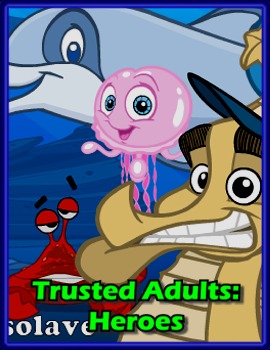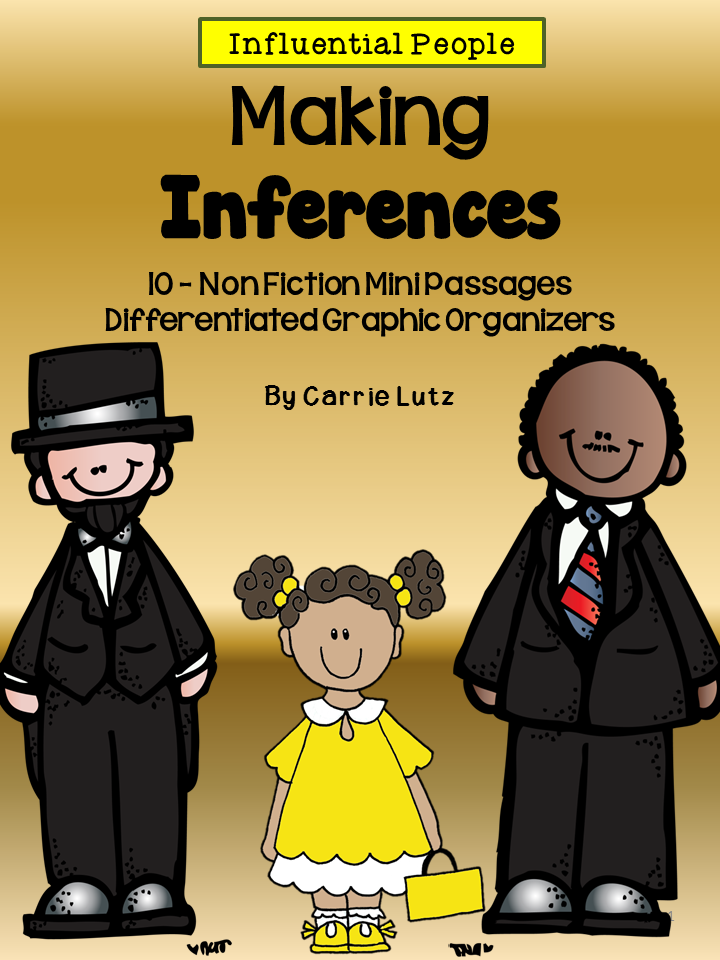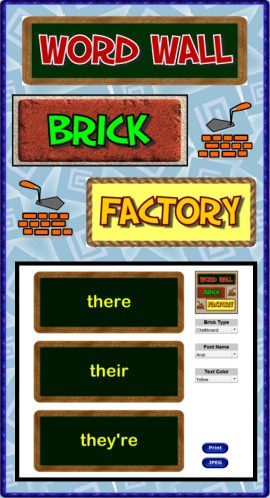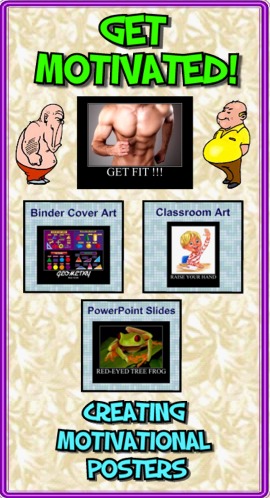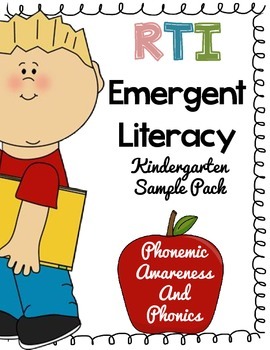********************************************************************************
Join The Best of Teacher Entrepreneurs Marketing Cooperative at http://www.thebestofteacherentrepreneursmarketingcooperative.com/2014/01/the-best-of-teacher-entrepreneurs.html and get THOUSANDS OF PAGE VIEWS for your TpT products!
Saturday, January 31, 2015
Word Problems {Common Core Aligned}
These word problem packets allow your students to apply what they've learned in math class to real-world situations.
These are aligned with the common core state standards 1.OA.1 and 1.OA.2.
These products are perfect for reinforcing students in First Grade or as a general review in Second Grade at the beginning of the year.
These packets includes:
1.OA.1
=================
Addition word problems.
Subtraction word problems.
1.OA.2
=================
word problems 3 addends.
********************************************************************************
********************************************************************************
FREE MATH LESSON - “Multplication & Division - Math Operations & Algebraic Thinking"
Happy Valentine's Day from TGIF - Third Grade is Fun! Thank you teachers for giving your heart to your students and profession every day. It is truly an act of love. In honor of what you do everyday, I have created the following freebie as my way of saying thank you.
We all want to keep our students' minds fresh on all of their facts (multiplication & division) while we move on to other topics such as fractions and geometry. To keep it fun and fresh for my class, I created these Valentine's Day activities that are correlated to the CCSS (3.OA.B.6, 3.OA.C.7).
This freebie is part of a larger pack that has activities for ALL of the Operations & Algebraic Thinking standards. If you are interested in taking a sneak peak at it, click on this link: Valentines Day Multiplication and Division Pack. Here is a preview of some of the pages in the pack.
We all want to keep our students' minds fresh on all of their facts (multiplication & division) while we move on to other topics such as fractions and geometry. To keep it fun and fresh for my class, I created these Valentine's Day activities that are correlated to the CCSS (3.OA.B.6, 3.OA.C.7).
Click this link to snag these freebies and please leave some feedback.
These make a wonderful hallway display. What an easy way to brighten up the hallway and show everyone who visits what your class has worked so hard on.
This freebie is part of a larger pack that has activities for ALL of the Operations & Algebraic Thinking standards. If you are interested in taking a sneak peak at it, click on this link: Valentines Day Multiplication and Division Pack. Here is a preview of some of the pages in the pack.
Happy Valentine's Day
Amber from
TGIF - Third Grade is Fun
Follow me on Facebook for teaching tips, freebies giveaways, and ways to organize your classroom.
TGIF - Third Grade Is Fun on Facebook
|
Trusted Adults: Heroes (Online Video) |
|||||
|
|||||
Linky Party- February Resources
by: 1st Grade Salt Life
K-3
President's Day is around the corner! Can you believe it's already January 31st? I can't! Time is certainly flying! Time to organize your resources for February! One of our latest products is a President's Day Bundle! This bundle combines our Washington and Lincoln resources with some President's Day activities added!
One of the more popular pages is our Venn Diagram comparing Washington and Lincoln.
You can find this FREE page here Washington/Lincoln Venn Diagram ! It's a THANK YOU for stopping by my blog!
There are so many great events in February to celebrate! Valentine's Day, President's Day, and Black History Month!
Please stop by my blog1st Grade Salt Life Blog!
my TPT shop 1st Grade Salt Life
Like us on Facebook: 1st Grade Salt Life on Facebook
Do you have a great February Resource? Please share below and join my linky party!
K-3
President's Day is around the corner! Can you believe it's already January 31st? I can't! Time is certainly flying! Time to organize your resources for February! One of our latest products is a President's Day Bundle! This bundle combines our Washington and Lincoln resources with some President's Day activities added!
One of the more popular pages is our Venn Diagram comparing Washington and Lincoln.
You can find this FREE page here Washington/Lincoln Venn Diagram ! It's a THANK YOU for stopping by my blog!
There are so many great events in February to celebrate! Valentine's Day, President's Day, and Black History Month!
Please stop by my blog1st Grade Salt Life Blog!
my TPT shop 1st Grade Salt Life
Like us on Facebook: 1st Grade Salt Life on Facebook
Do you have a great February Resource? Please share below and join my linky party!
LANGUAGE ARTS LESSON - "Making Inferences....Resources to Teach This Difficult Skill"
By Carrie Lutz
K - 3
I used to really struggle with teaching INFERRING to young learners (1st - 3rd). I could never find the resources I needed to model this difficult, but super important skill.
It's tough to find good reading skills in lower level text. So I decided to write my own mini passages and build in some inferences that my students could master. It worked!
The passages are very short and focus on MAKING INFERENCES. You can use the passages for mini lessons, seat work, small group work or homework.
Below is a page from St. Patrick's Day Making Inferences.
These little passages come with this Graphic Organizer and 2 others shown below. This is a great way to scaffold the instruction and have your students inferring on their own in no time.
I like to start with giving the students the text that implied something not written in the text. After they become more comfortable with that, I introduce the inference and they must give me the text that implied it.
Finally, after they have mastered that, I give them a blank sheet so see if they can find the text and the inference. I am so pleased at what they are able to do in such a short time.
I hope this post helps you with your Making Inferences lessons.
For a Free Passage, Click Below
Check out these other MAKING INFERENCES products.
14 Non Fiction Mini Passages with Built In Inferences
and Differentiated Graphic Organizers
11 Non-Fiction Mini Passages about Influential People
Bundled Product ~ 14 Fiction & 11 Non Fiction Mini Passages
St. Patrick's Day ~ 6 Mini Passages Starring Lucy and Lucky Leprechaun
Visit my Blog
How To Support Students With Disabilities Through Thoughtful Accommodations and Modifications
In this link, you will see a helpful way to analyze how to best support students with disabilities by the use of modifications or accommodations. By shifting your thinking, you can enhance the environment of your students!
Click on - How To Level the Playing Field
Follow me on Teachers Pay Teachers for new products and Specials!
https://www.teacherspayteachers.com/Store/Creative-Inclusion
Follow me on Facebook
https://www.facebook.com/creativeinclusion?focus_composer=true&ref=aymt_homepage_panel
Follow me on Pinterest
http://www.pinterest.com/nikkih1982/
Click on - How To Level the Playing Field
Follow me on Teachers Pay Teachers for new products and Specials!
https://www.teacherspayteachers.com/Store/Creative-Inclusion
Follow me on Facebook
https://www.facebook.com/creativeinclusion?focus_composer=true&ref=aymt_homepage_panel
Follow me on Pinterest
http://www.pinterest.com/nikkih1982/
FREE LANGUAGE ARTS LESSON - “Free Valentine's Choice Boards”
by Brooke Brown
1st-4th Grade
These FREE Valentine's Choice Boards are perfect for centers or morning work in February!
Students need only lined paper to complete.
Page 1 is most appropriate for grades 1-2.
Page 2 is most appropriate for grades 3-4.
Thank you and Happy Valentine's Day! :-)
If you like this free download, please take a moment to rate me and follow my store.
Students need only lined paper to complete.
Page 1 is most appropriate for grades 1-2.
Page 2 is most appropriate for grades 3-4.
Thank you and Happy Valentine's Day! :-)
If you like this free download, please take a moment to rate me and follow my store.
Misc. Lesson – “Grading Rubrics for All Occasions: Common Core Aligned”
By: Chalkboard Creations
Grades: 3rd-5th
I know what you are thinking right now… “I really
should be working on that huge stack of grading instead of browsing the
internet for teaching ideas.” Am I right? Well, if I am you have come to the
right place! This is a pack of 14 grading rubrics for 3rd through 5th grade to
help your grading go quicker!
Included:
-Blank Rubric Template
-Presentation Rubric
-Poster Rubric
-Skit Rubric
-Interactive Notebook Grading Rubric
-Group Work Rubric
-Discussion Group/ Literature Circle Rubric
-Learning Centers Rubric
-Book Report Rubric
-Science Experiment Rubric
-Opinion Writing Rubric
-Informative/ Explanatory Writing Rubric
-Narrative Writing Rubric
PLUS, I have included 4 Self-Evaluations
for your students to fill out:
-Group Work Evaluation (Others)
-Group Work Self-Evaluation
-Discussion Group or Literature Circle
Self-Evaluation
-Learning Center Self-Evaluation
With the rubrics provided, plus the blank one included, you can grade virtually anything in your classroom!
With the rubrics provided, plus the blank one included, you can grade virtually anything in your classroom!
Brought to you by:
Also, follow Chalkboard Creations on Pinterest to get
other great ideas and products for teaching!
Friday, January 30, 2015
Converting Improper Fractions to Mixed numbers is a 3 day complete lesson plan that builds skills from basic to complex. The lesson plan includes:
- lesson plans with I can statements and essential questions
- worksheets for independent practice
- blackline master fraction strips with and without numerical fractions
-differentiation tips with anticipated learning difficulties
- bubble map .
* This product can be used for remediation
https://www.teacherspayteachers.com/Product/Tape-DiagramConverting-Improper-Fractions-to-Mixed-Numbers-1628494
Poetry Unit
 |
| Poetry Units |
Featured Seller: TIPS 4 Teachers
Tell us about yourself.
Our
Store, TIPS 4 Teachers is a husband and wife team. We are from the states, but
we are living and working in Singapore
What do you like best about teaching?
We love
the interaction with the kids and how every day is different
Describe your favorite TpT product.
My
poetry units are my favorite products. I have one for the upper elementary (Upper Elementary Poetry Unit) and lower
elementary (Poetry Unit) age ranges. Both products bring enormous creativity and fun to the instruction
of poetry
What advice would you give to someone who may want to become a
seller at Teachers Pay Teachers?
What are
you waiting for? This is the best PD you will ever get!
What have you done or hope to do with your TpT earnings?
Buy a
house! We think big. We are 1/10 of the way there. Each month gets
a little stronger.
What do you like best about being a member of The Best of
Teacher Entrepreneurs Marketing Cooperative?
There is
one person in the room smarter than everybody in the room. That is everybody in
the room working together.
|
Word Wall Brick Factory |
|||||
|
|||||
|
Get Motivated! (Creating Motivational Posters) |
|||||
|
|||||
Thursday, January 29, 2015
Gaming World War I
In more than 20 years of teaching Social Studies, one thing has held true over time: Students that are engaged, remember what they learn. I was exposed to a simulation when I was student teaching in Forest City Iowa. It had six fictional countries and it ended with war or peace. I thought it would be more fun and educational if you used the real countries and created objectives for each to accomplish.
Where To Begin:
The first thing I do is open the Leader's Spreadsheet. With my class roster in hand, I start by putting marks by the students that I think would be the best leaders. Then I assign them to the most important roles: Presidents of Germany, Great Britain, France, Russia, Austria-Hungary and Italy. Once these positions have been chosen, I usually group some of the smaller countries together: (Romania and Japan), (Serbia, Greece, Montenegro), (Portugal and Belgium). When I have a larger class, I assign Foreign Ministers to the larger countries. These students are may be less outgoing or may not want to take leadership positions, but will be very active negotiating and advising the presidents.
The binders are made for each country: Student Overview, World Situation Summary, Alliance Map, Rules of the WWI Simulation and individual Top Secret Documents. Cover Pages and spine inserts make their "Top Secret" Documents look official. Flags are taped to the front of student's desks to identify which country they represent.
Day 1 1913: I call this Orientation Day. I use a Keynote Presentation to explain the rules of the simulation and give examples. My class periods are roughly 40 minutes long- in case your wondering. When I finish the presentation, I announce a news flash has come off the wire! Then I hand out the World Times article on the Assassination of the Archduke Francis Ferdinand. Then I assign speeches to the leaders of Austria-Hungary and Serbia which will be read in front of the class the next day (1914) With the remaining time left, students are allowed to begin negotiating, making alliances and planning their strategy.
Day 2 1914: The class starts off with speeches from Serbia and Austria-Hungary. After the speeches, I ask if anyone wants to Mobilize? One country mobilizes and like a chain reaction, their neighbors mobilize until everyone that can mobilize does. Seeing those troops appear on the map forces countries to be prepared out of fear. At this point, the simulation is in the student's hands. This is the part that scares a lot of teachers. We have a system of turns: Central Powers go first followed by the Allies and finally the Neutrals. Then the process keeps cycling through until the bell rings. We will pick up wherever we left off the next day (1915) Inside a turn: we start with Central Powers War. The Central Powers Countries have to declare war during this time. Once they are done declaring war, The Allied Powers and then the Neutrals do the same. This process repeats over and over as many times as we can during the period. If the students believe one side is stalling, they can invoke the ten minute time limit rule. After the class period ends, I take submarine casualties on Allied ships and mobilize the countries who mobilized for the next day. Then I save the maps as PDF's and post them to Moodle for students.
Day 3 1915: World Times Article on the Sinking of the Lusitania. Poison Gas Certificates are handed out to Germany, France and Great Britain. Battles, meetings, diplomacy, negotiations all continue: Day 4 1916, Day 5 1917 and Day 6 1918. Substantive conversations are going on all over the room and especially outside of class. The game becomes emotional as countries try to achieve objectives or even survive.
Labels:
#sschat,
World War One
Location:
Alden, IA 50006, USA
Language Arts Lesson - "'Building' Great Writers-Huge Writing Unit"
Language Arts Lesson - "'Building' Great Writers-Huge Writing Unit for Middle School"
by Kim Crouch
6th - 9th Grade
My colleagues have also asked me for some skill practice in writing for other disciplines, and sometimes they will borrow my dittoes to use in their classes. Therefore, I really created this unit for everyone and every discipline.
Included in this bundle is:
*10 2-day lessons ( plus 4 mini-lessons) from the foundations of writing to the final assessment.
The 10 lessons are:
1. Starting with the Foundation-What do we know?
2.Building an Essay, Hamburger Style
3. Sophisticating Our Language-Removing Dead Words
4. Simplifying an Introduction-Introduction Map
4b. Mini-Lesson-Grabbers
4c. Mini-Lesson-Practicing Writing an Introduction Paragraph
5. Writing a TALES Response-Body Paragraph Writing
5b. Formulating Topic Sentences
5c. Formulating Compound Sentences
6. Writing a Body Paragraph-Butterflies
7. Analyzing and Editing Paragraphs
8. Writing a Conclusion-Step-by-Step
9. Assessment-Putting It All Together-Should Cell Phones Be Used in Schools?
10.Peer Editing
Separate Files-
2 Smart Board Files
*Body Paragraph Rubric
*Common Core Essay Rubric
*Peer-Editing Sheet
*Checklist for Writing
*This bundle is 63 Page PDF file, which also includes two Smart Board presentations, as well as 4 Word documents for edit.
*All the lessons come with instructions, an "I Can" statement, and the Common Core Standards for each lesson.
This is an amazing resource, and I use this for my entire 3-Week Writing Unit.
by Kim Crouch
6th - 9th Grade
***Super Bowl Weekend Sale*** 10% off all my products!
Over the past 15 years of teaching, I have worked diligently and rigorously on planning a unit that covers and builds students’ skills in writing. In the past, my students have struggled writing an introduction, as well as a conclusion; in addition, they have a hard time lengthening their sentences to sound more fluid and refined. My colleagues have also asked me for some skill practice in writing for other disciplines, and sometimes they will borrow my dittoes to use in their classes. Therefore, I really created this unit for everyone and every discipline.
Included in this bundle is:
*10 2-day lessons ( plus 4 mini-lessons) from the foundations of writing to the final assessment.
The 10 lessons are:
1. Starting with the Foundation-What do we know?
2.Building an Essay, Hamburger Style
3. Sophisticating Our Language-Removing Dead Words
4. Simplifying an Introduction-Introduction Map
4b. Mini-Lesson-Grabbers
4c. Mini-Lesson-Practicing Writing an Introduction Paragraph
5. Writing a TALES Response-Body Paragraph Writing
5b. Formulating Topic Sentences
5c. Formulating Compound Sentences
6. Writing a Body Paragraph-Butterflies
7. Analyzing and Editing Paragraphs
8. Writing a Conclusion-Step-by-Step
9. Assessment-Putting It All Together-Should Cell Phones Be Used in Schools?
10.Peer Editing
Separate Files-
2 Smart Board Files
*Body Paragraph Rubric
*Common Core Essay Rubric
*Peer-Editing Sheet
*Checklist for Writing
*This bundle is 63 Page PDF file, which also includes two Smart Board presentations, as well as 4 Word documents for edit.
*All the lessons come with instructions, an "I Can" statement, and the Common Core Standards for each lesson.
This is an amazing resource, and I use this for my entire 3-Week Writing Unit.
Ancient Rome: the Interactive Way
If you teach Ancient Rome and either love Interactive Notebooks or want to give them a try, then I have just the item for you.
Compiled through 11 years of teaching the subject, this notebook has been assembled with eleven lessons on Ancient Rome, starting with the geography of Italy and concluding with the decline and fall of the Roman Empire. It is then summarized with a study guide and exam.
In between you get lessons on the republic of Rome, the class system & life within a Roman town, complete with a Power Point tour of some ancient Pompeiian artifacts, the Coliseum and Circus Maximus, Julius Caesar, Augustus Caesar, the other emperors of Rome, and more. And all of these lessons come with foldables, cloze notes, things that spin, or other interactive devices that will make the learning hands on and more interesting and accountable for your students.
This lesson and an interactive notebook on Ancient Greece are available in my store today.
Brittany Naujok
https://www.teacherspayteachers.com/Store/Brittany-Naujok-The-Colorado-Classroom
Kindergarten RTI Emergent Literacy - Phonemic awareness FREEBIE SAMPLE PACK
This packet is a systematic way of teaching Phonemic awareness.
Only spend about five to ten minutes a day on this. It’s an intensive phonics intervention packet that will help beginning readers or poor readers in need of training. Pictures are used selectively to aid students on certain pages but are purposely left out on others so students can truly focus on the letter sounds.
Students can first learn the letter names and the SOUNDS the letters stand for. As the teacher, you’ll aid the student to isolate the letter sounds, by pronouncing the sounds as clearly as possible.
This packet is design to be used in a binder, just insert into a transparent sheet, use a dry eraser marker, and print-n-go!
Each lesson builds on the previous one so there is measurable progress.
Only spend about five to ten minutes a day on this. It’s an intensive phonics intervention packet that will help beginning readers or poor readers in need of training. Pictures are used selectively to aid students on certain pages but are purposely left out on others so students can truly focus on the letter sounds.
Students can first learn the letter names and the SOUNDS the letters stand for. As the teacher, you’ll aid the student to isolate the letter sounds, by pronouncing the sounds as clearly as possible.
This packet is design to be used in a binder, just insert into a transparent sheet, use a dry eraser marker, and print-n-go!
Each lesson builds on the previous one so there is measurable progress.
Subscribe to:
Posts (Atom)







